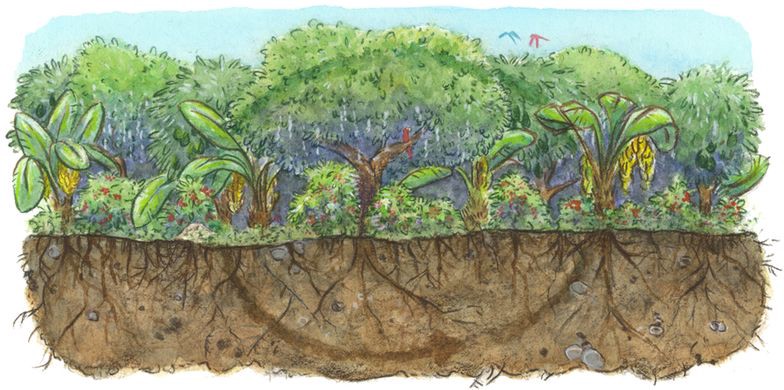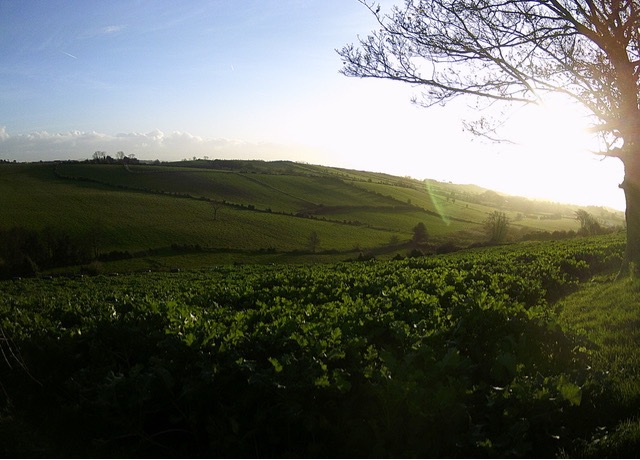Farming Carbon - A framework for regenerative agriculture

Project Background
Over 70% of the land in Northern Ireland is dedicated to agriculture and the agri-food industry is the major contributor of greenhouses gases here. On the other side of the coin, the soil is one of our greatest assets and healthy soils can play a huge part in the future of sustainable agriculture.
There are many challenges facing the farming sector in the context of climate change but farming sustainably presents many opportunities, which will in the long-run help farmers in the transition to a greener agro-economy.
In short, regenerative agriculture is a system of farming principles and practices that seeks to rehabilitate and enhance the entire ecosystem of the farm by placing a heavy premium on soil health with attention also paid to water management, fertilizer use, and more. It is a method of farming that “improves the resources it uses, rather than destroying or depleting them,” according to the Rodale Institute.

Farming Carbon is a framework developed in Northern Ireland to scale sustainable farming practices and support farmers. It aims to help businesses and individuals invest in climate action while supporting farmers in their transition to greener farming.
Regenerative agriculture is not just a solution for increasing biodiversity and supporting the rural economy, its practices fortify the soil and can help create climate resilience, including food security.
Its Digital Manager, Stephanie McEvoy, presents Farming Carbon as a solution that provides an incredible opportunity to show how plants contribute to capturing big quantities of CO2 from the atmosphere, just like forestry. Although in addition to biodiversity benefits and carbon drawdown, the framework supports food security and the rural economy as well.
Farming Carbon Work Plan
The work carried out by Farming Carbon will be split between research and evidence collection to demonstrate the value of this framework, with data gained from one farm working in collaboration with Queens School of Biological Sciences.
The next steps will be to expand the Farming Carbon’s network, providing farmers with a consultation with an agronomist and some time will be dedicated to education and community engagement.
The farm involved in this project has been investing in sustainable practices over the past few years. Due to its success, a notable increase in biodiversity, and overall plant health Farming Carbon was created with the goal of initially conducting research to provide evidence of the effectiveness of these practices. Currently, the team is developing a clear framework to help the agriculture industry to move towards more sustainable practices.
Project Progress – An example of its initial success
A multi-species mix of Kale, Typhon, Rape & Turnip was initially planted. Before livestock was able to feed on it, many insects had visited the plants and in the evening a cloud of movement over the top of the field could be appreciated. Each plant has a function, the Typhon, for example, is a natural antibiotic, hence it provides natural protection from potential pathogens for the cattle that in turn require less veterinary attention.
The real demonstration of the positive impact on the ecosystem of the diversity of 4 crop species became clear once the cattle started to paddock graze the greenery.

The birds arrived in flocks, darting between the cattle hooves to get at the newly exposed soil brimming with worms. The quantity of birds present is indicative of the number of insects that have thrived in that space.
Aside from the biodiversity, the plants grew thick and dense in a canopy, like a mini rainforest. Plants flourished due to the principle of reciprocity, and the bigger they grow the more carbon they convert and store as biomass.
Plants also act as air filters, and they fortify the soil, making it less susceptible to erosion.
Overall this growth has had a positive impact on water and air quality, plant and soil health, and atmospheric carbon reduction. Economically, the measures have helped the farm hosting the Farming Carbon pilot project to support a healthy, well-nourished herd of cattle, with lower veterinary costs, without shipping in any over-processed soy-based cattle meal.
When communities of vegetation absorb CO2, the process well known as photosynthesis converts the carbon content into sugar, which feeds the rich microbial networks belowground. Root diversity helps build the soil structure, so the soil is less susceptible to erosion.
All the initiatives Farming Carbon is planning to research and undertake are an attempt to restore the natural ecosystem balance, with the ambition of merging modern efficiency with time-honoured traditions. The key focus is on guaranteeing healthy soil along with above- and belowground systems to support consequently biodiversity and healthy livestock.
This is a cascade process with a positive impact on human health as well.
What Farming Carbon can do
Delayed financial return is a key barrier for most farms changing how they do things. Farming Carbon hopes to provide guidance and assistance throughout this period and help the rural community feel supported.
Once there is adequate evidence and financial support, the organisation aims to help and guide farmers through the process of how regeneration can work on their farms, and how to make it profitable.
Stakeholders
- Communities of farmers
- Local community groups
- Schools
- Businesses, hoping to reach their sustainability goals and the communities that they serve.
- Individuals who are interested in knowing more about sustainable farming processes.
Farming Carbon aims to start a new topic of conversation with consumers and to highlight the difference between agricultural processes and industrial farming.
Taking action to reduce methane where possible, is also critical at this stage. Putting the cattle at the centre of the process will encourage farmers to reduce chemical usage on their crops, providing healthier soils and enabling biodiversity to flourish.
Project Impact
In the areas of the farm that have transitioned to sustainable practices, there is already a notable increase in biodiversity, visible through the increased volume of insects and the species of birds sighted. Species like short-eared owls, red kites, yellowhammers, bullfinches, sparrow hawks, buzzards, meadow pipits are among the birds populating the farm.
These birds are indicators of a healthy and balanced habitat. In collaboration with researchers from Queens University Belfast, the project is beginning to gather scientific evidence to measure the impact above and belowground, in the soil microbiome and insect populations, to evaluate the benefits of the measures introduced on the farm.
FarmingCarbon Contact Details
Stephanie McEvoy
07850306534

